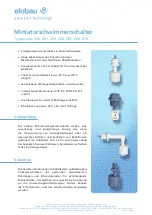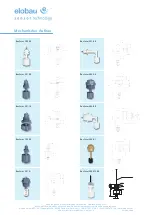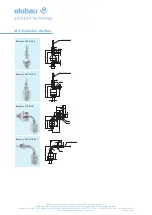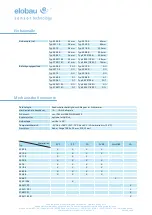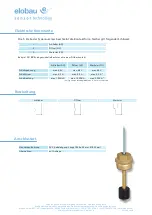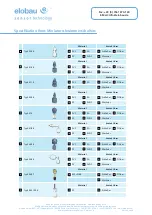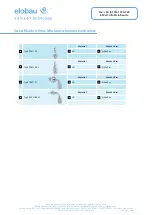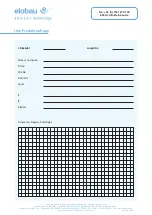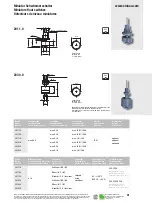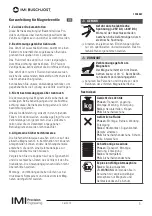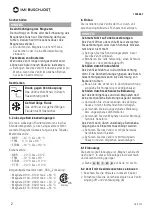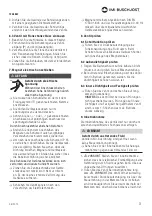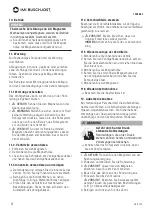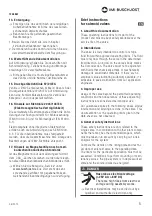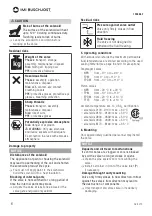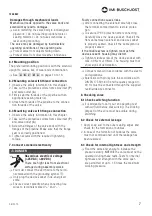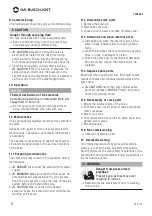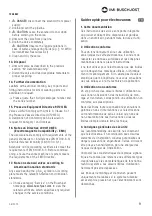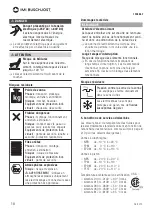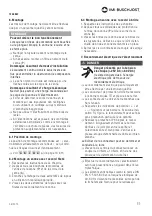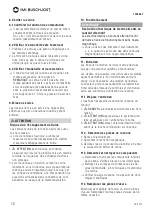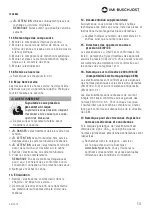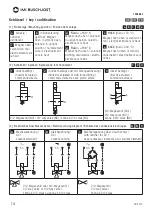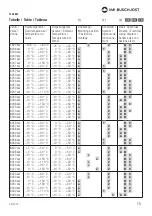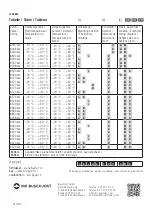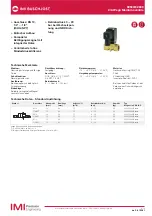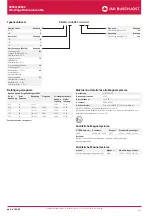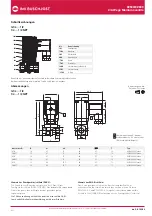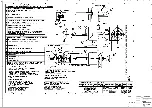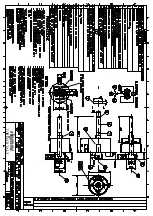
6
08/2015
1248867
Residual risks
Pressure against valve outlet
Valve only firmly closes in flow
direction.
Fluid freezing
The valve is not designed to
withstand the fluid freezing.
5. Operating conditions
With standard solenoids the maximum permissible
fluid temperatures are limited according to the used
sealing material (see page 8 and 9 for exceptions).
Diaphragm valves:
•
NBR from –10 °C to +90 °C
•
FPM from 0 °C to +110 °C
•
EPDM from –10 °C to +110 °C
Piston valves
•
NBR from –20 °C to +90 °C
•
FPM from –10 °C to +110 °
•
EPDM from –20 °C to +110 °C
•
PTFE from –20 °C to +110 °C
Ambient temperature acc. to
c
CSA
us
certification:
•
solenoids 9100...9149: max. +60 °C
•
solenoids 9150...9199: max. +50 °C
•
solenoids 9300...9399: max. +50 °C
•
solenoids 9400...9499: max. +50 °C
•
solenoids 8170...8199: max. +65 °C
6. Mounting
Only appropriately qualified personnel may install
the valve.
NOTICE
Deposits and dirt lead to malfunctions
If control bores are clogged or core is blocked
by soil the valve no longer closes or opens.
→
Clean the pipe system prior to mounting the
valve.
→
Install a strainer in front of the valve inlet (
P
)
if necessary.
Damage through faulty mounting
Valve only firmly closes in flow direction. Inflow
against the valve’s flow direction may lead to
the destruction of components.
→
Only transport and store valve in its delivery
packaging.
!
CAUTION
Risk of burns at the solenoid
The surface of the solenoid will heat
up to 120 °C during continuous duty.
Touching leads to risk of burns.
→
Leave the solenoid to cool down before
working at the valve.
Residual risks
kg
Weight of the valve
Phases:
transport, storage,
assembly, maintenance, disposal
Risk:
falling off, tipping over
PPE:
protective footwear
Hazardous fluids
Phases:
assembly, operation,
maintenance, disposal
Risk:
skin contact, eye contact,
breathing vapors
PPE:
protective gloves, protective eye
glasses, breathing protection
Sharp threads
Phases:
transport, assembly,
maintenance, disposal
Risk:
risk of cuts
PPE:
protective gloves
Potentially explosive atmosphere
Risk:
danger of explosion
!
WARNING:
Only use solenoids
and device sockets with adequate
Exprotection in areas with explosive
atmosphere.
Damage to property
NOTICE
Disturbance of the solenoid
The application of paint or housing the solenoid
may lead to overheating of the coil and shorten
the solenoid‘s product life cycle.
→
You must not apply paint to the solenoid or
build the solenoid into a heat insulation.
Blocking of internal parts
If the valve is not switched for a long period of
time the internal parts may block.
→
Actuate the valve at least once a week if the
valve gets energized only seldom.

